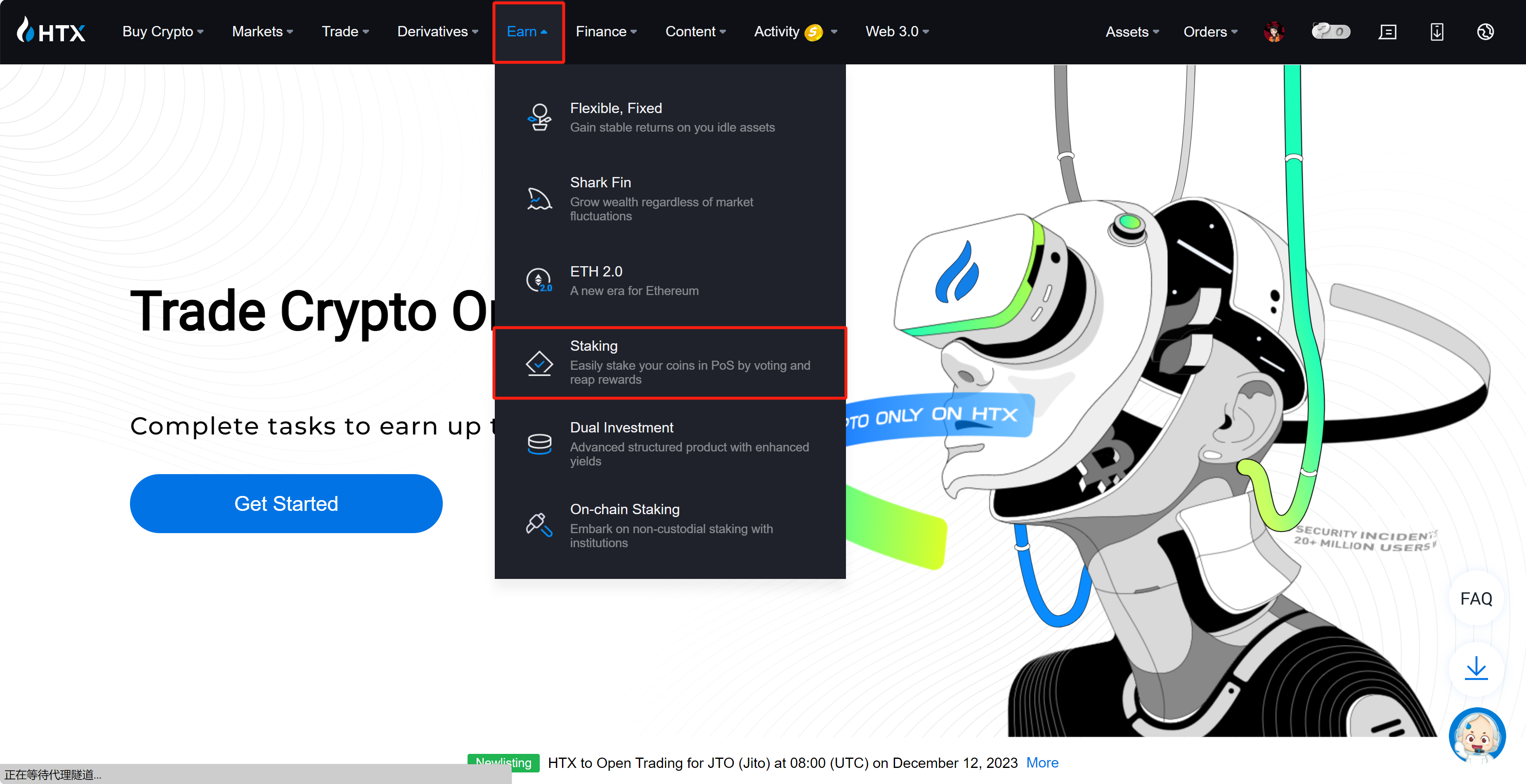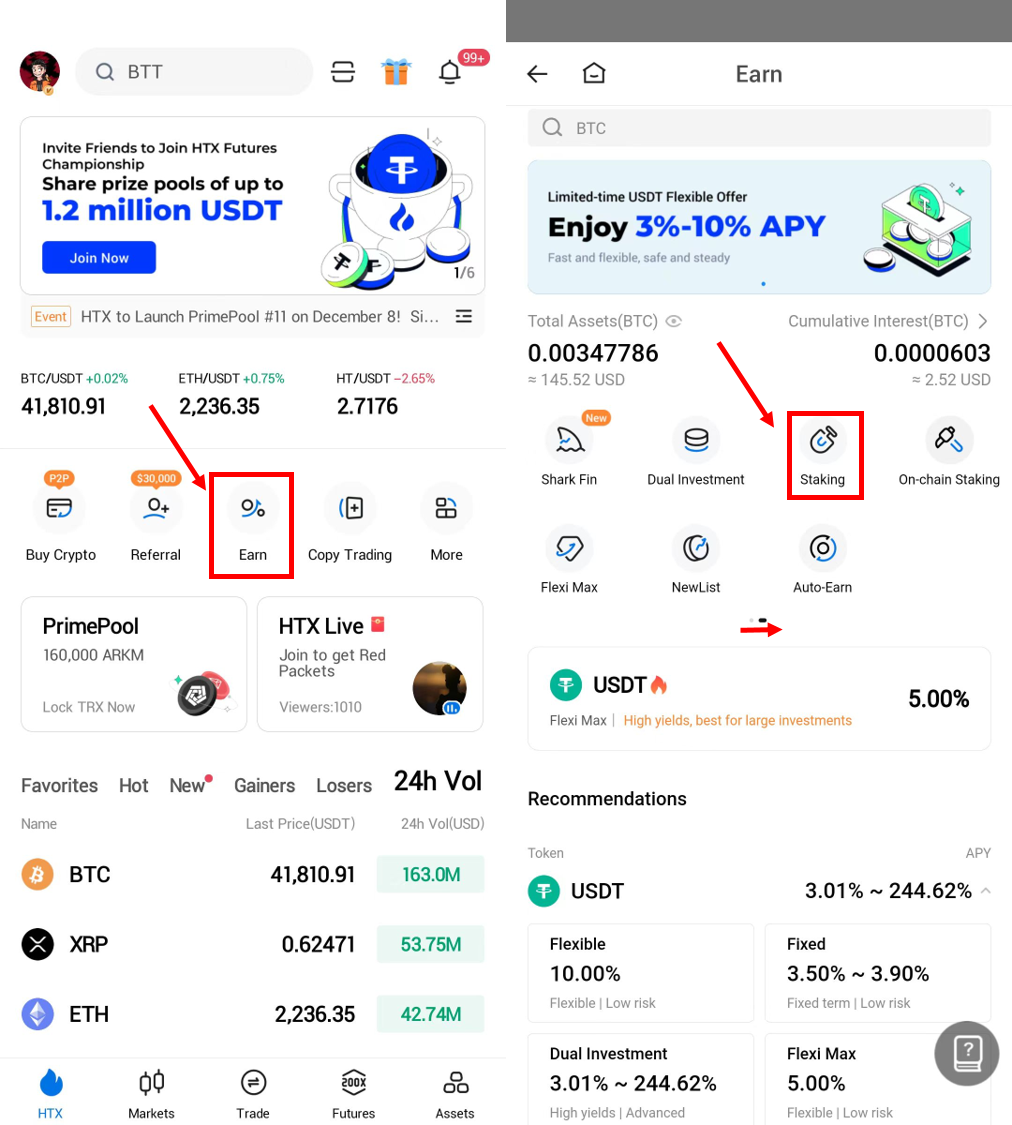Introduction to Staking & Voting
- Must-Read for Beginners
- User Guides
Briefing
Node staking is a less resource-intensive alternative to mining. It is a way to support the security and operations of a blockchain network by inputting assets into a crypto wallet. Simply put, node staking is the act of locking up cryptos to get rewards. Join HTX Staking & Voting, and you will be able to earn rewards easily.
What is Proof of Stake (PoS)?
Proof of Stake (PoS) is one of the two major consensus mechanisms for blockchain. A transaction sent to the blockchain network will be verified by nodes to ensure the trader has sufficient tokens or does not compromise the network. The verified transaction will be added to the blockchain and cannot be changed.
PoS is a common alternative to Proof of Work (PoW), the original consensus algorithm used by Bitcoin. It is considered an energy-efficient way of achieving consensus, as it removes energy-intensive crypto miners. Under PoS, holders do not mine but stake their coins to participate in the nodes for block creation.
How does node staking work?
Although staking primarily aims to ensure the robust development of blockchain, it is only feasible when the nodes are properly incentivized for their contributions, i.e., staking needs to be rewarded.
Crypto holders can delegate their staked coins to validator nodes or hold assets in their wallets for a fixed duration. They can grow their account balance by staking. Normally, the probability of being chosen is proportionate to the number of staked coins — the more coins you lock up, the greater your earnings will be.
What is a staking pool?
A staking pool allows a group of coin holders to combine their resources to increase their chances of validating blocks and being rewarded. They merge their staking power and share the rewards generated in proportion according to their contributions to the pool.
Setting up and maintaining a staking pool often requires extensive time and expertise. Staking pools tend to be the most effective on blockchains that require a relatively high (technical or financial) barrier to entry.
Additionally, pools enable additional flexibility for individual stakers. Typically, the staking rewards have to be locked up for a fixed period and have a withdrawal or vesting date set by the protocol.
As such, joining a staking pool instead of solo staking might be an ideal choice for ordinary users.
How to join HTX Staking & Voting?
HTX is committed to providing a fast node staking service that safeguards your staked assets. After your coins are staked on HTX, rewards will start to accrue from the next day (T+1) and be distributed on T+2.
1. Log in to your HTX account, and click Finance > Staking & Voting.

2. Choose a coin you want to stake, and click Stake Now.

3. Enter the amount you want to stake, and click Stake Now.

Note: Staked assets cannot be withdrawn during the lockup period, if applicable to the node. Upon maturity, you can get back your assets.
Here's how you can join Staking & Voting on the HTX app:


Summary
Staking & Voting provides an alternative for users who wish to participate in blockchain consensus and governance. Moreover, it is an easy way to earn passive income by holding tokens.
